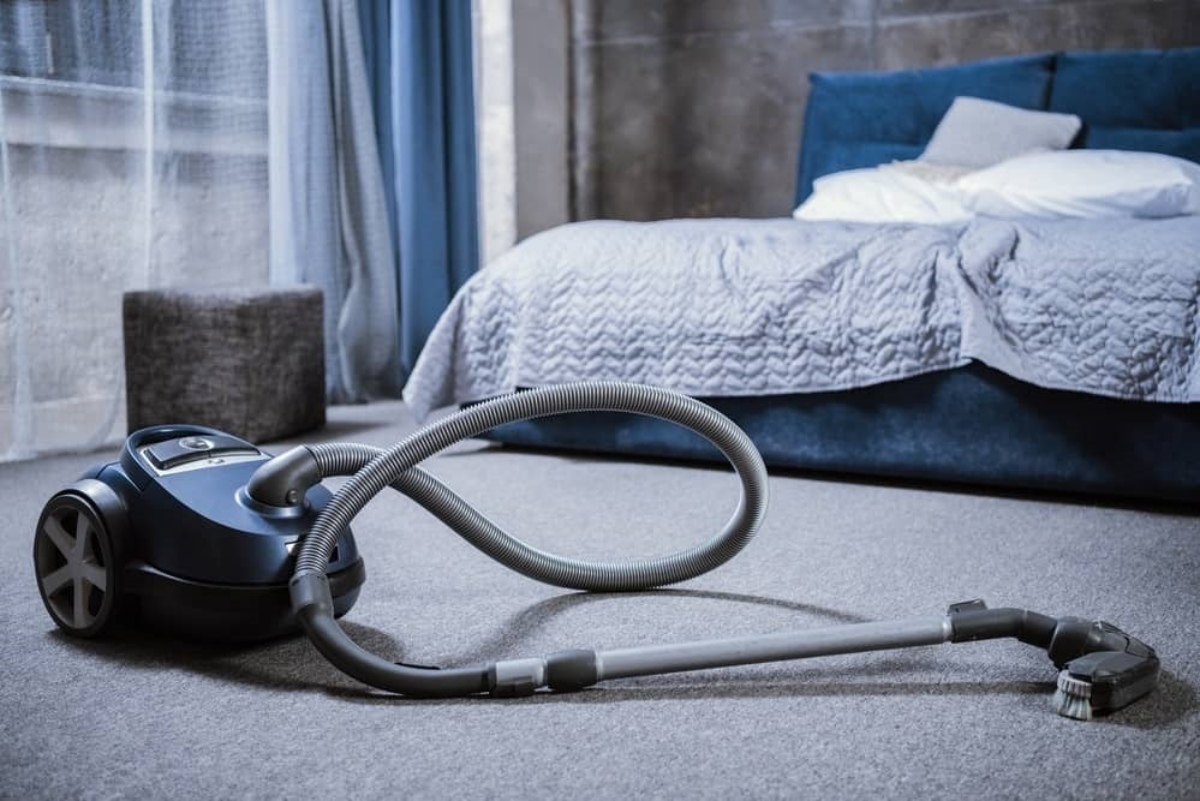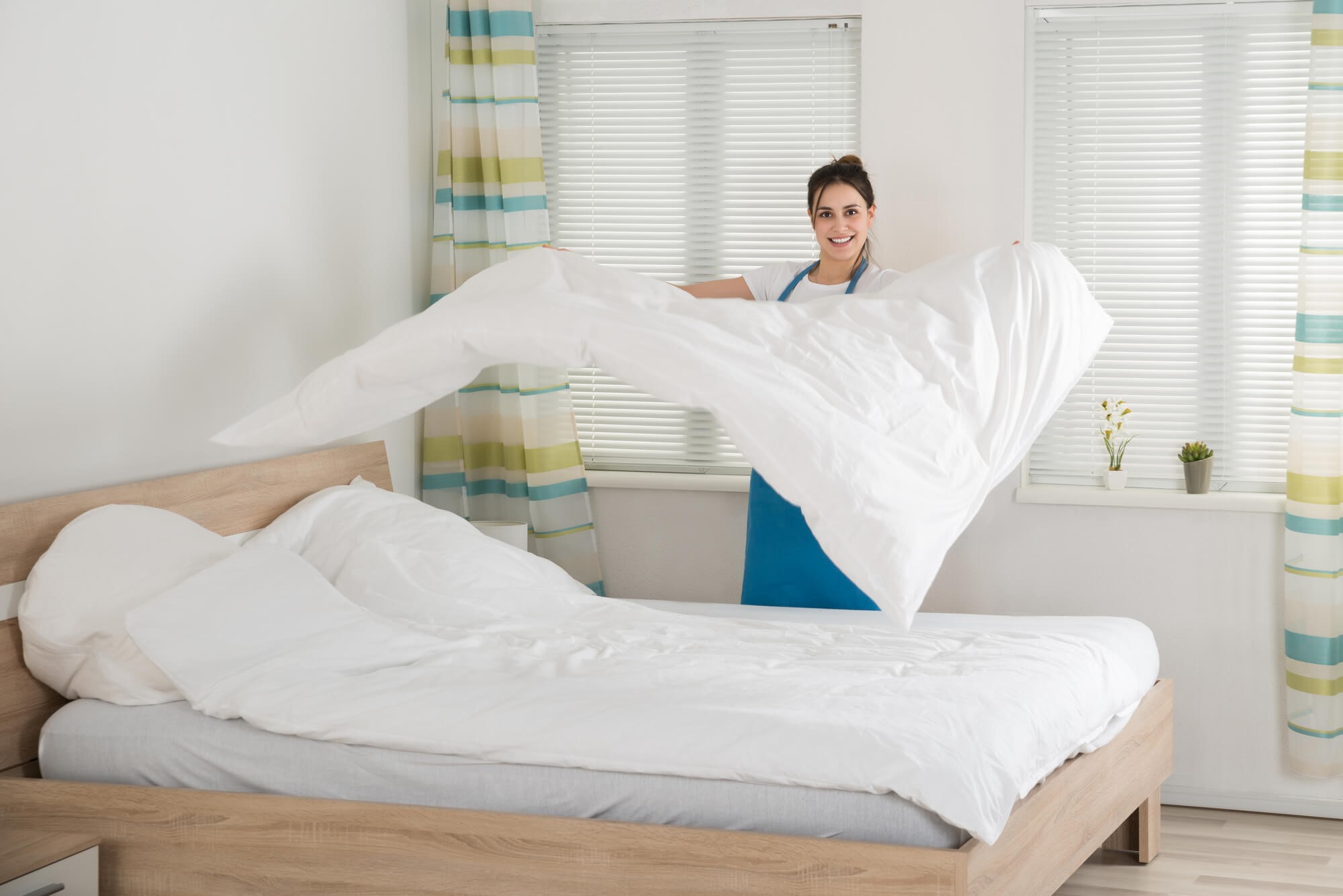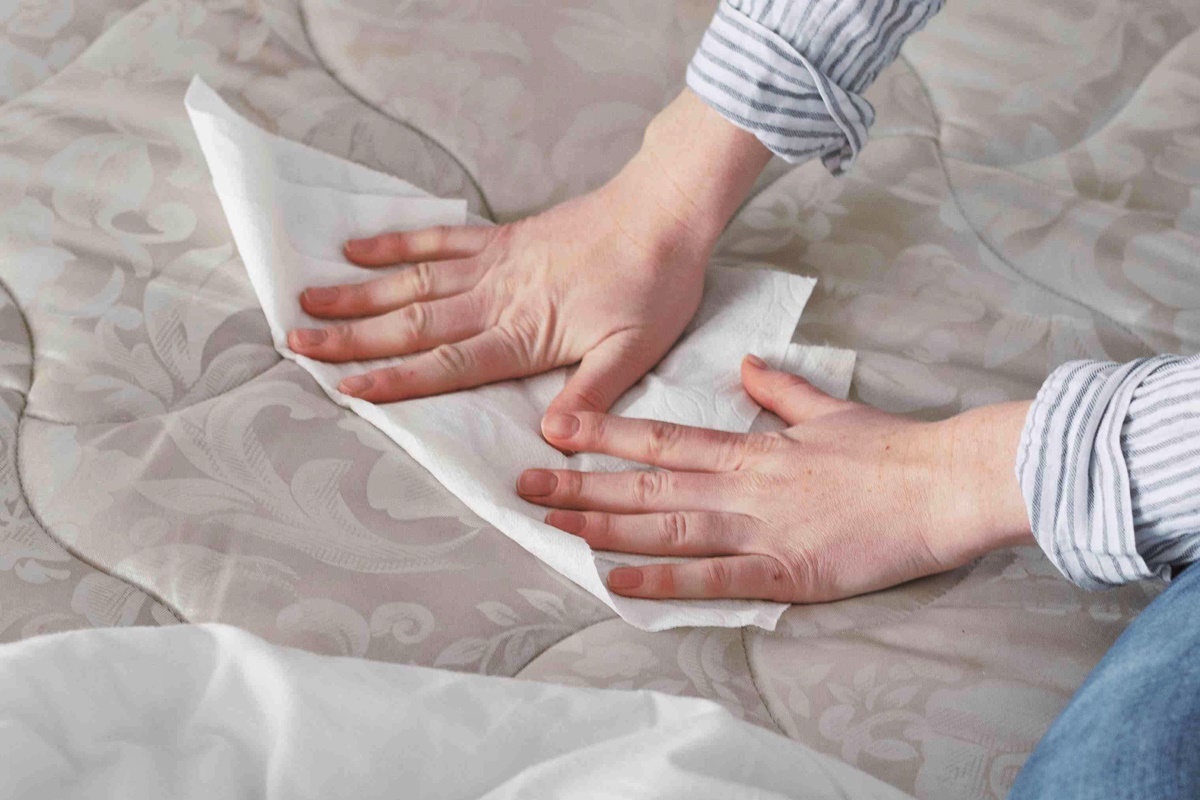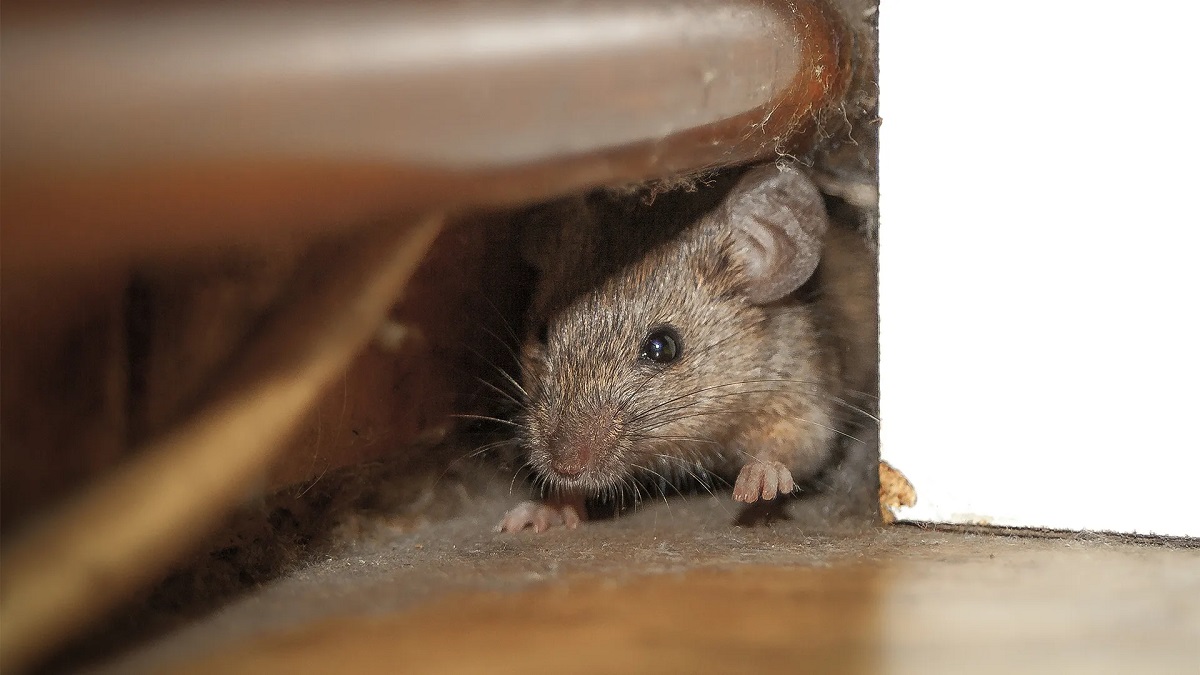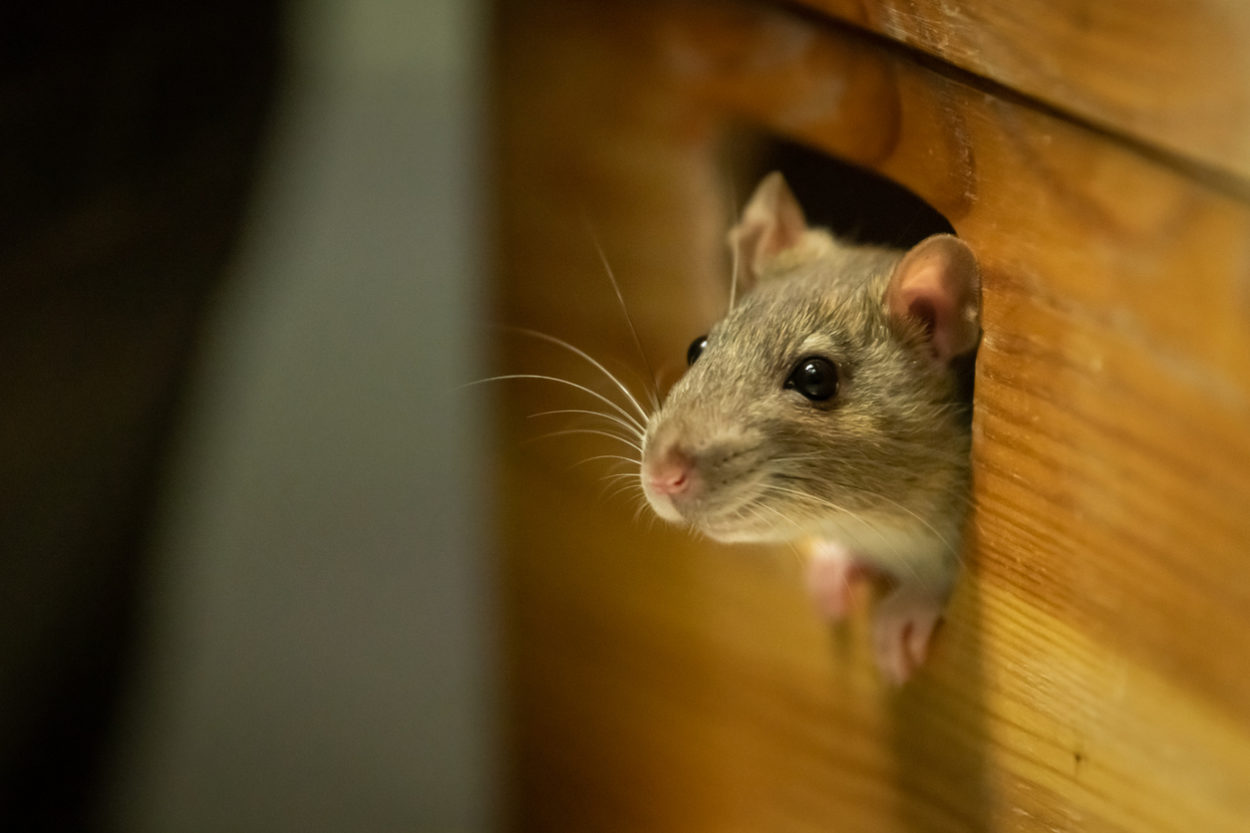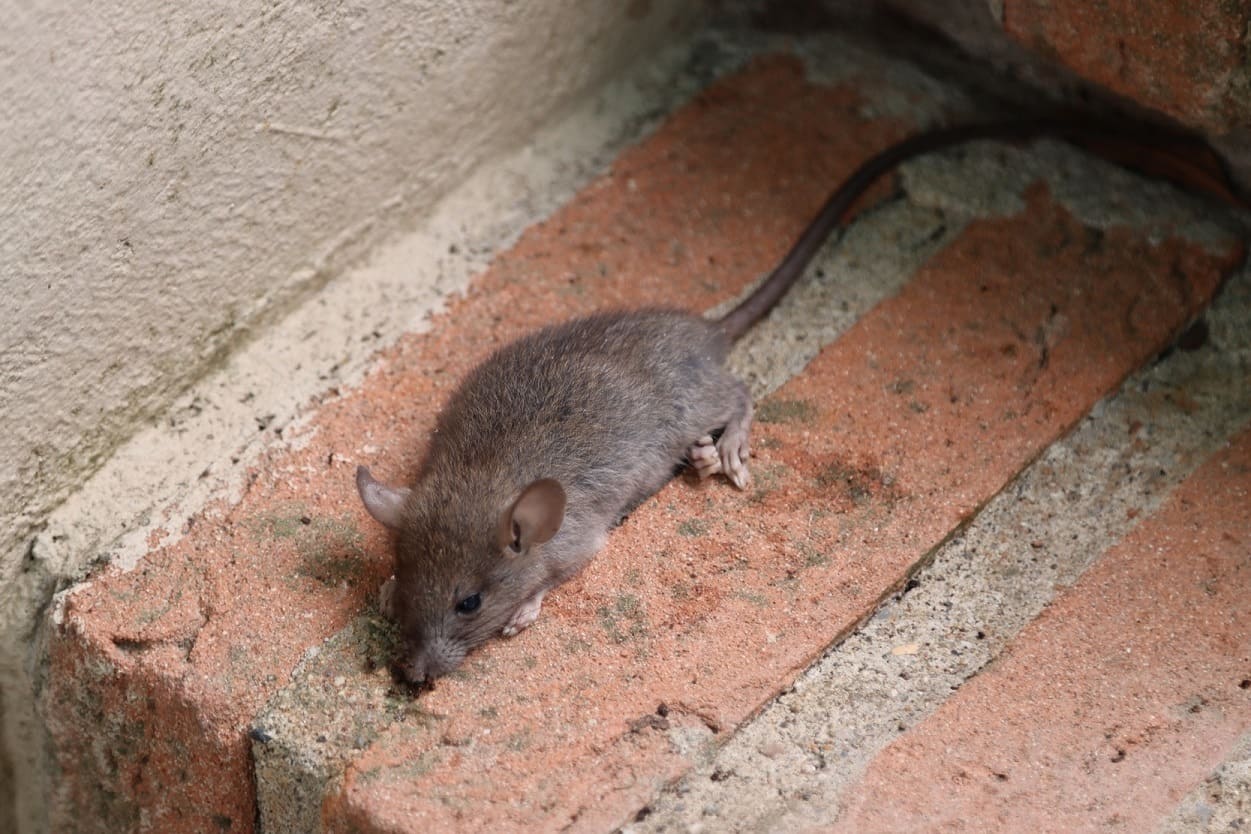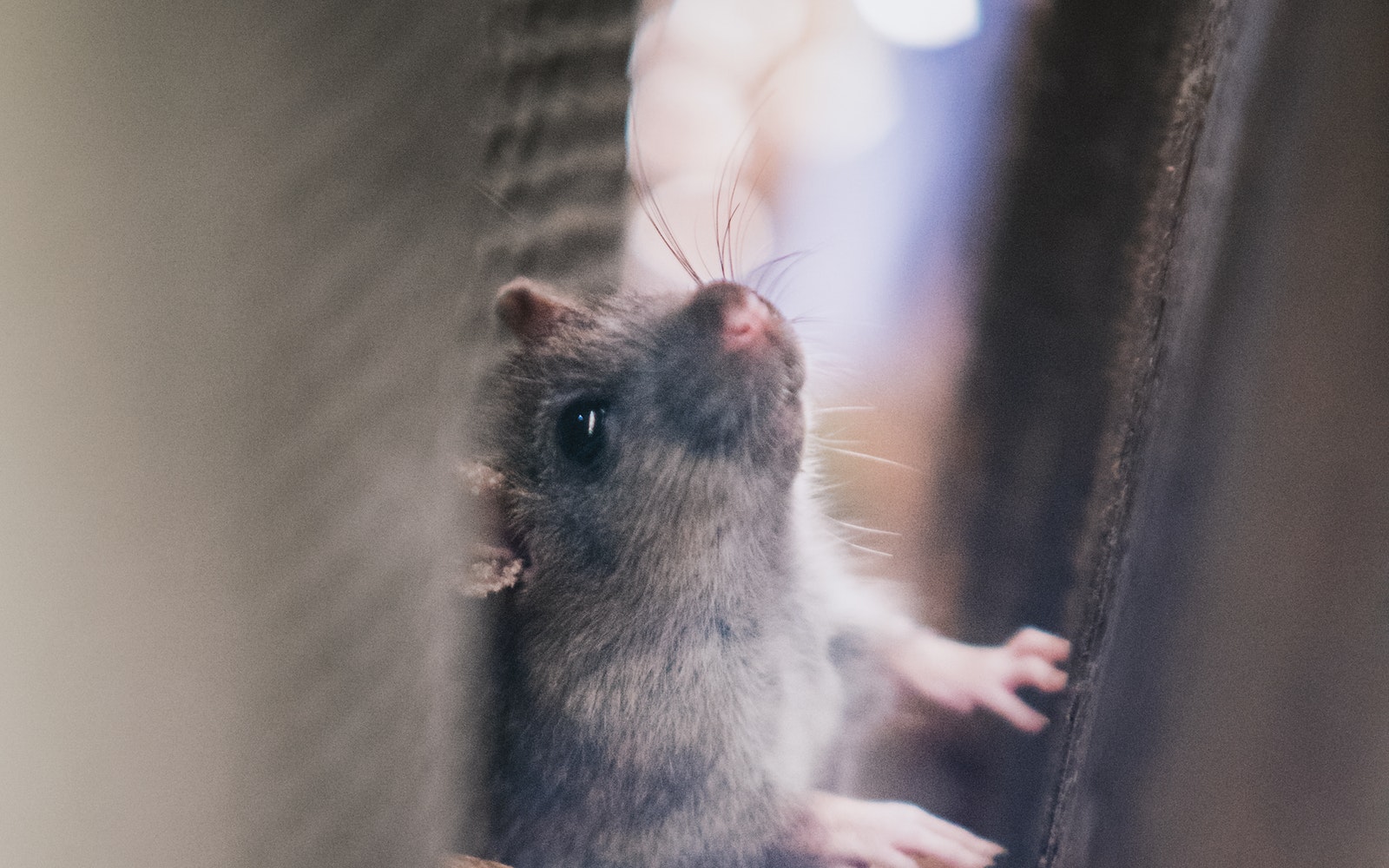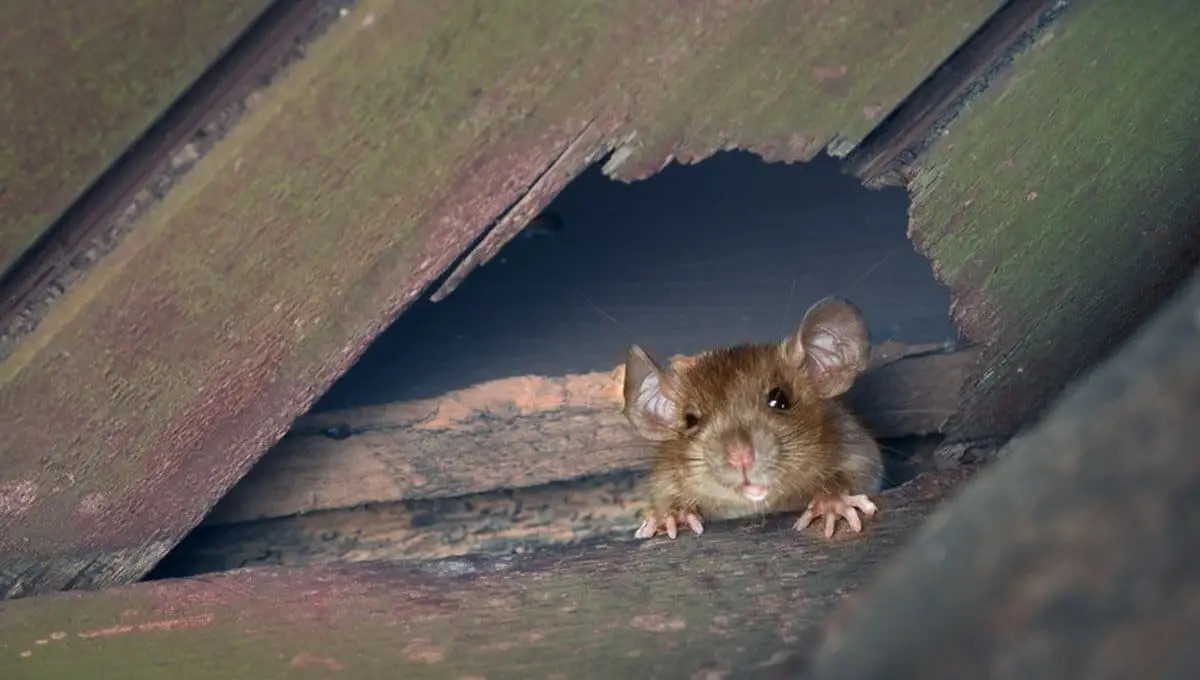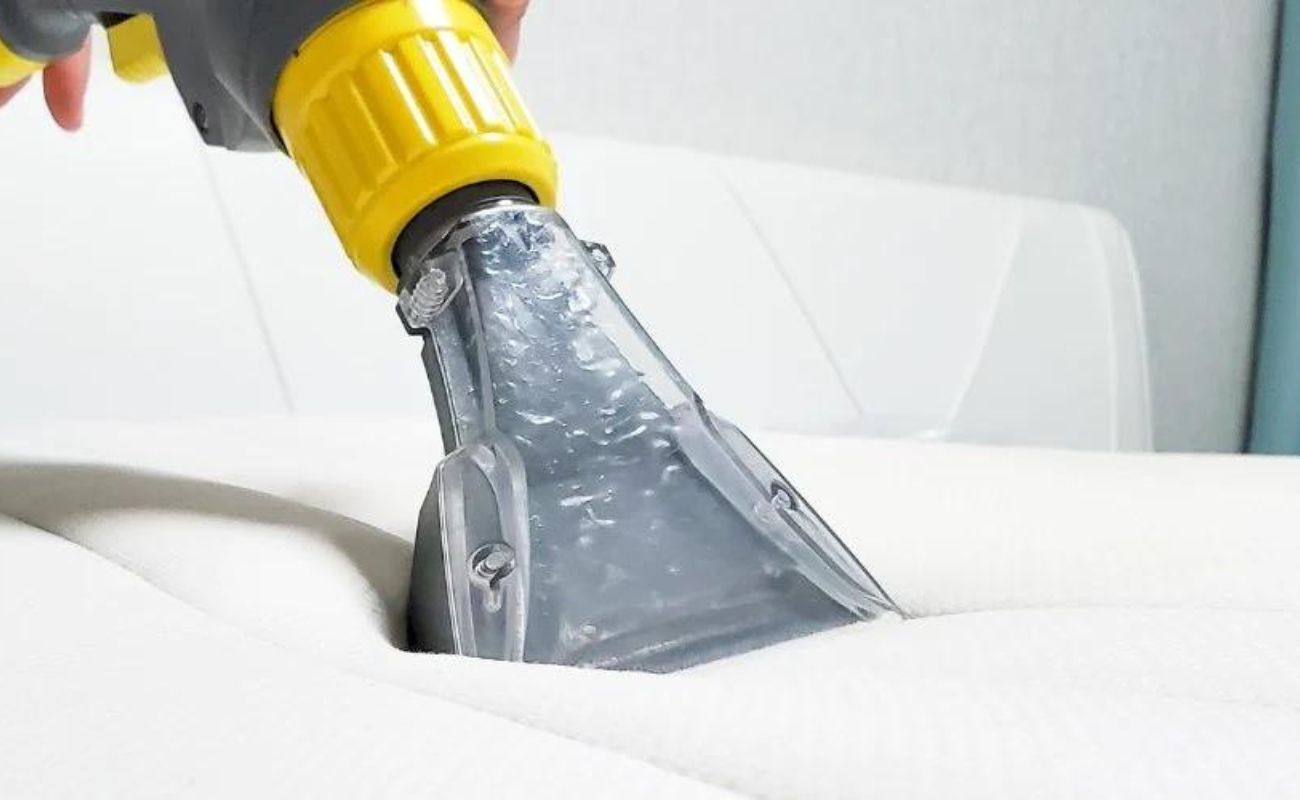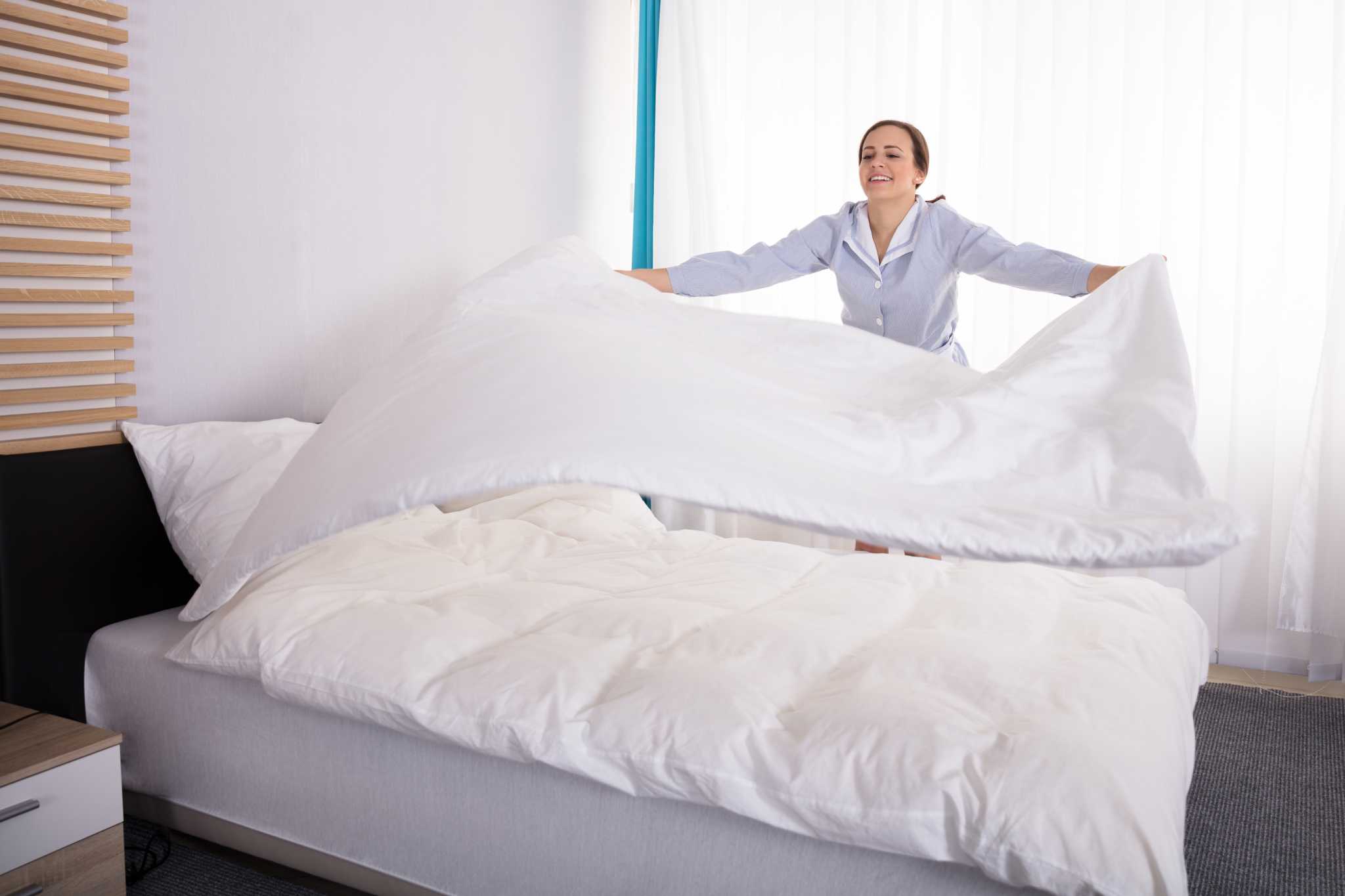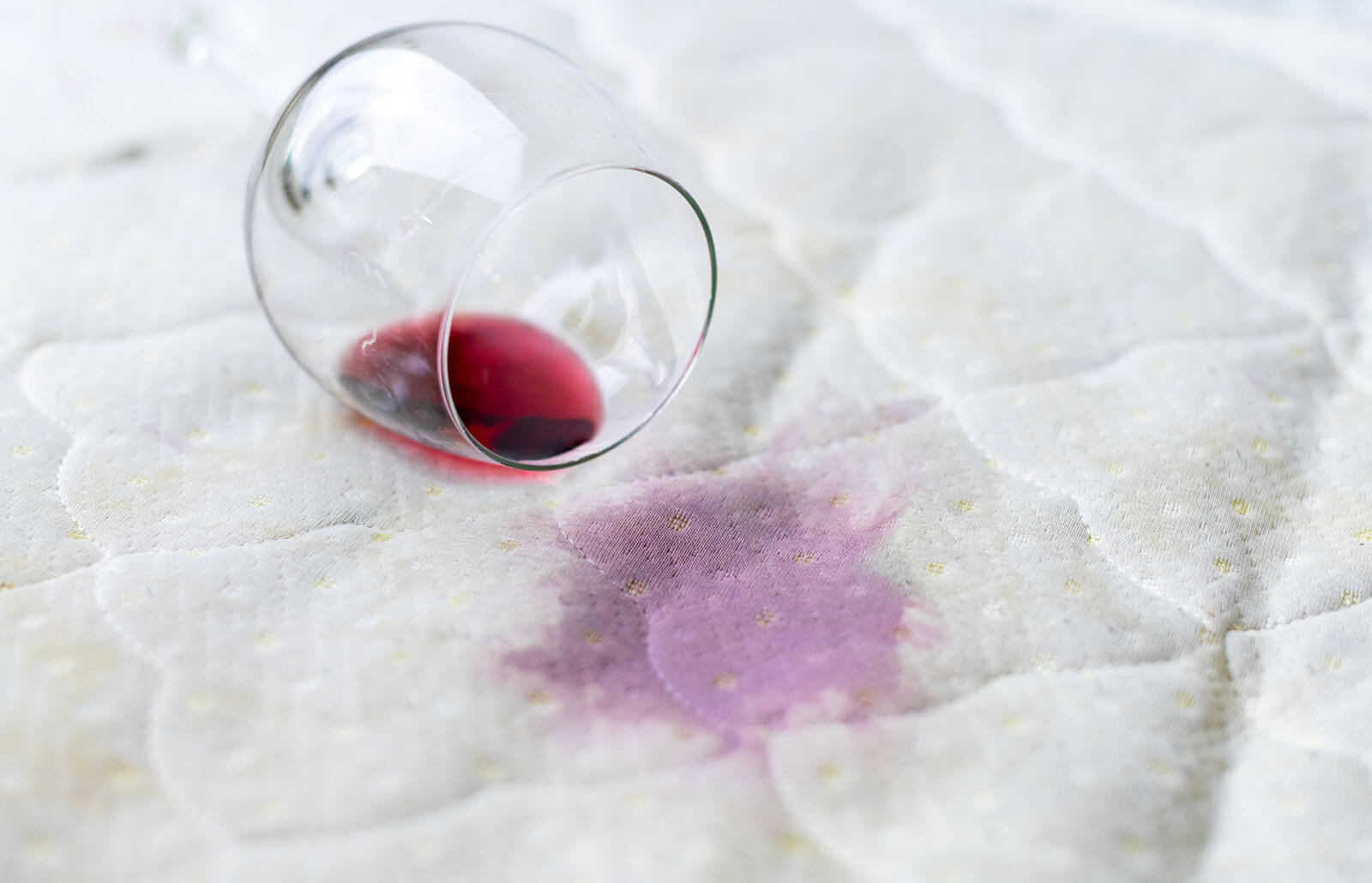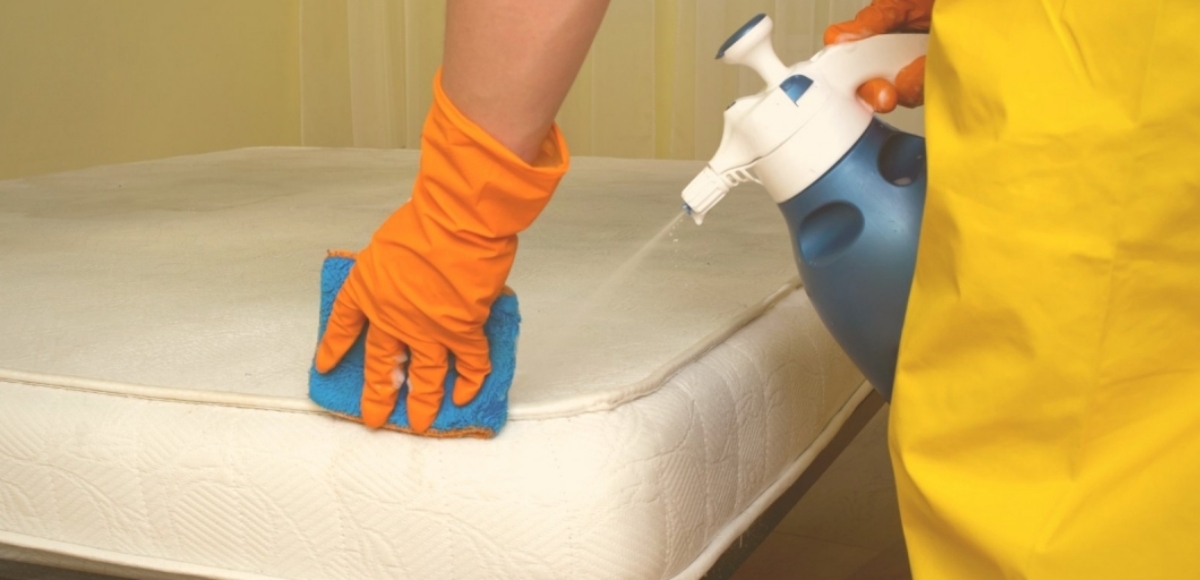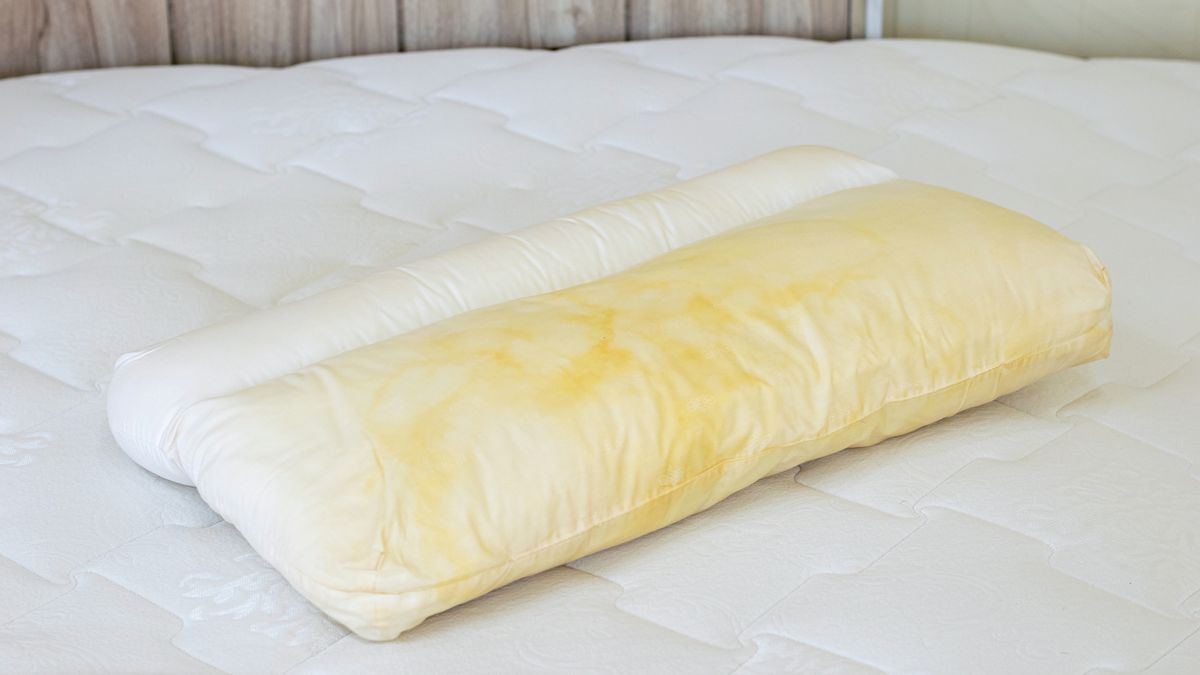Home>Furniture>Bedroom Furniture>How To Get Mice Out Of A Mattress
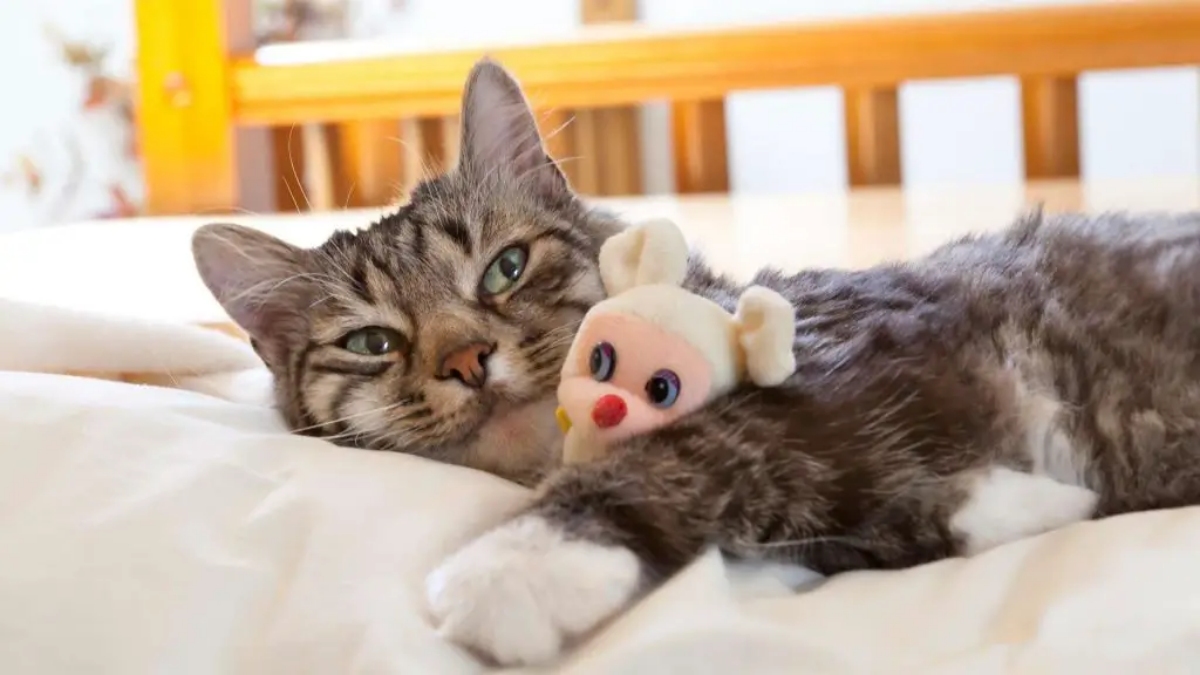

Bedroom Furniture
How To Get Mice Out Of A Mattress
Modified: May 6, 2024
Learn effective methods to remove mice from your bedroom furniture, including your mattress. Safely get rid of unwanted rodents from your sleeping area.
(Many of the links in this article redirect to a specific reviewed product. Your purchase of these products through affiliate links helps to generate commission for Storables.com, at no extra cost. Learn more)
Introduction
Having mice in your bedroom can be a distressing experience, especially when they start to invade your mattress. Not only can these tiny creatures cause damage to your mattress, but they also pose health risks as they carry diseases and allergens. Dealing with a mice infestation in your mattress requires quick action to prevent further damage and maintain a hygienic sleeping environment.
In this article, we will guide you through the process of getting rid of mice from your mattress. From identifying signs of infestation to implementing preventive measures, you will learn how to effectively deal with the situation and restore the comfort and safety of your bedroom.
Key Takeaways:
- Keep your mattress free from mice by identifying signs of infestation, sealing entry points, and maintaining cleanliness to prevent future infestations.
- Disinfect and clean your mattress after trapping and removing mice to ensure a hygienic sleeping environment and use preventive measures to avoid future infestations.
Read more: How To Get Mice Out Of Crawl Space
Signs of Mice Infestation in Your Mattress
Mice are nocturnal creatures that prefer dark and warm areas, making your cozy mattress an attractive hiding spot for them. To confirm if your mattress is infested, keep an eye out for the following signs:
- Foul Odor: Mice urine and droppings have a distinct odor that can become noticeable over time. If you detect a musty or ammonia-like smell coming from your mattress, it could be a sign of a mice infestation.
- Droppings: Check for small black or dark brown droppings on or around your mattress. Mice droppings are typically the size of a grain of rice and can be scattered or concentrated in one area.
- Gnaw Marks: Mice have a constant need to chew to keep their teeth sharp. Look for small gnaw marks on the corners or edges of your mattress, as well as any chewed fabric or foam.
- Nesting Materials: Mice build nests using materials they find in your bedroom. Inspect your mattress for shredded paper, fabric fibers, or other small materials that could indicate a nesting site.
- Scratching Noises: Mice are active at night and can create scratching or rustling sounds as they scurry around your mattress. If you frequently hear these noises, it’s a clear sign of a mice infestation.
If you spot any of these signs, it’s crucial to address the issue promptly to prevent further damage to your mattress and potential health risks. Now, let’s delve into why mice are attracted to your mattress in the first place.
Understanding Why Mice Are Attracted to Your Mattress
Before we dive into the steps to get rid of mice in your mattress, it’s important to understand why these critters are drawn to it in the first place. Mice seek shelter, warmth, and a readily available food source, all of which can be found in your bedroom, particularly in your mattress.
Here are a few reasons why mice are attracted to your mattress:
- Warmth and Comfort: Your mattress provides a warm and cozy environment, making it an ideal place for mice to nest and find shelter.
- Food Sources: Mice are opportunistic eaters and can survive on a variety of food sources. They may be attracted to your bedroom if they can access crumbs, food wrappers, pet food, or other edible items that may have found their way onto your mattress.
- Easy Access: Mice are excellent climbers and can easily navigate their way into your bedroom through small cracks, gaps, or openings in the walls, floors, or windows. Once inside, they can quickly make their way to your mattress.
- Nesting Material: Mice are resourceful when it comes to finding materials to build their nests. Your mattress can provide them with soft fibers and fabric that they can use for nesting purposes.
By understanding why mice are attracted to your mattress, it becomes easier to take targeted actions to eliminate the infestation and prevent future occurrences. In the next step, we will help you identify the possible entry points for mice.
Step 1: Identifying Entry Points for Mice
Before you can effectively eliminate mice from your mattress, you need to identify the entry points through which they gained access to your bedroom. Mice can squeeze through incredibly small openings, so it’s essential to thoroughly inspect the room for potential entry points. Here’s what you can do:
- Check the Walls: Examine the walls around your mattress for any cracks or gaps. Pay close attention to baseboards, window frames, and electrical outlets as these are common entry points for mice.
- Inspect the Flooring: Inspect the area surrounding your mattress, including the floor, carpet, and skirting boards. Look for any holes, gaps, or chewed areas that may serve as entry points.
- Seal Windows and Doors: Make sure that your bedroom windows and doors close tightly and are free from damage. Install door sweeps and weatherstripping to prevent mice from slipping through gaps.
- Examine Pipes and Vents: Check for any openings around pipes, vents, and utility entry points. Mice can enter through these small openings, so ensure they are properly sealed.
- Inspect Electrical Wiring: Mice occasionally chew on electrical wires, creating gaps or holes that they can use as entry points. Look for any damages to the wiring and address them promptly.
By thoroughly inspecting your bedroom and identifying these entry points, you can take appropriate measures to seal them off and prevent mice from entering in the future. In the next step, we will discuss cleaning and removing any food sources that may attract mice to your mattress.
Step 2: Cleaning and Removing any Food Sources
One of the key factors that attract mice to your mattress is the presence of accessible food sources. To effectively deal with a mice infestation, it’s crucial to clean and remove any food sources that may be attracting them. Follow these steps to eliminate potential food sources:
- Clear Clutter: Remove any clutter around your mattress, such as food wrappers, crumbs, or spilled food. Mice are more likely to stay and nest in areas that provide easy access to food.
- Vacuum Thoroughly: Use a vacuum cleaner with a hose attachment to thoroughly clean your mattress, paying close attention to the seams, crevices, and corners where mice may hide or leave droppings.
- Dispose of Waste Properly: Place all garbage and food waste in sealed containers and regularly empty them into outdoor trash bins. This will prevent mice from being attracted to the scent of food waste.
- Store Food Properly: Keep all food items in airtight containers to prevent mice from accessing them. This includes pet food, snacks, and any other perishable items that are in or near your bedroom.
- Maintain Cleanliness: Regularly clean your bedroom, including the areas around your mattress, to remove any potential food sources or crumbs that may attract mice.
By removing accessible food sources, you make your mattress and bedroom less appealing to mice, discouraging them from infesting your sleeping area. In the next step, we will discuss sealing cracks and openings near the mattress to prevent mice from accessing it.
To get mice out of a mattress, thoroughly clean the area around the mattress to remove any food crumbs or spills that may be attracting the mice. Then, place mouse traps near the mattress to catch the mice. Keep the area clean to prevent future infestations.
Step 3: Sealing Cracks and Openings Near the Mattress
Now that you have cleaned and eliminated potential food sources, it’s time to seal off any cracks and openings near your mattress to prevent mice from accessing it. Mice can squeeze through tiny gaps, so it’s important to be thorough in your sealing efforts. Follow these steps to effectively seal the cracks and openings:
- Inspect and Caulk: Use a flashlight to inspect the areas around your mattress, paying close attention to the walls, baseboards, and floors. Look for any gaps or cracks that mice could potentially squeeze through. Seal these openings with caulk or a similar sealant to block off their entry points.
- Install Door Sweeps: If your bedroom has an external door, consider installing door sweeps to seal the gap between the door and the floor. This will prevent mice from entering through the bottom of the door.
- Repair Damaged Screens: If your bedroom has windows or vents with damaged screens, repair or replace them. This will prevent mice from entering through these openings.
- Fill Gaps Around Pipes: Use steel wool or wire mesh to fill any gaps or openings around pipes and utility entry points. Mice are unlikely to chew through these materials, effectively blocking their access.
- Seal Electrical Openings: Check for any gaps or openings around electrical boxes or outlets. Use foam insulation or caulking to seal these areas, ensuring mice cannot enter through them.
By sealing off cracks and openings near your mattress, you create a barrier that mice cannot easily penetrate. This significantly reduces the chances of them infesting your sleeping area. In the next step, we will discuss trapping and removing mice from your mattress.
Step 4: Trapping and Removing Mice from Your Mattress
Once you have taken precautions to seal off entry points, it’s time to trap and remove the mice that may still be inside your mattress. Trapping is a humane and effective method to capture mice without harm. Follow these steps to trap and remove mice from your mattress:
- Select the Right Traps: Choose the appropriate traps for capturing mice. Snap traps, live traps, or electronic traps are common options. Place multiple traps near your mattress, focusing on areas where you have identified signs of mice activity.
- Bait the Traps: Place a small amount of bait on each trap, such as peanut butter, cheese, or chocolate. Mice are attracted to these food items and will be enticed to enter the traps.
- Set the Traps: Carefully set the traps according to the manufacturer’s instructions. Make sure they are securely placed and won’t accidentally trigger when touched.
- Check and Dispose of Trapped Mice: Regularly inspect the traps for captured mice. If a mouse is caught, use gloves to handle the traps and safely dispose of the mice according to local regulations. Ensure you clean the traps thoroughly before reusing them.
- Monitor for Success: Continuously monitor the traps to gauge the effectiveness of your trapping efforts. If you no longer catch any mice, it’s a good indication that the infestation has been successfully eliminated.
Trapping and removing mice from your mattress may take time and patience. Regularly checking and resetting the traps will increase your chances of successfully capturing the mice. In the next step, we will discuss disinfecting and cleaning your mattress to ensure it is safe and hygienic.
Step 5: Disinfecting and Cleaning the Mattress
After successfully trapping and removing mice from your mattress, it’s crucial to disinfect and clean it to ensure a hygienic sleeping environment. Mice carry diseases and leave behind droppings and urine that can pose health risks. Follow these steps to disinfect and clean your mattress:
- Remove Bedding: Strip off all bedding, including sheets, pillowcases, and blankets, and wash them in hot water with detergent. Use the highest temperature setting recommended for the fabric.
- Vacuum Thoroughly: Use a vacuum cleaner with an upholstery attachment to thoroughly vacuum the entire surface of your mattress. Pay extra attention to seams, edges, and corners where debris and droppings may accumulate.
- Disinfect the Mattress: Mix a solution of equal parts water and white vinegar in a spray bottle. Lightly spray the mattress with this solution to disinfect it. Allow it to air dry completely.
- Neutralize Odors: To eliminate any lingering odors, sprinkle baking soda over the entire surface of the mattress. Let it sit for a few hours, then vacuum it up using the upholstery attachment.
- Use a Mattress Protector: Consider using a waterproof and allergen-proof mattress protector to prevent future infestations and protect your mattress from stains or spills.
By following these steps, you can effectively disinfect and clean your mattress, ensuring a safe and hygienic sleeping surface. Regularly vacuuming your mattress and washing your bedding will help maintain a clean sleeping environment and prevent future infestations. In the next section, we will discuss preventive measures to avoid future mice infestations in your mattress.
Preventing Future Mice Infestations in Your Mattress
Now that you’ve successfully dealt with a mice infestation in your mattress, it’s important to take preventive measures to avoid future occurrences. By implementing the following steps, you can minimize the risk of mice infesting your sleeping area:
- Maintain Cleanliness: Keep your bedroom and surrounding areas clean and free of clutter. Regularly vacuum and mop the floors, wipe down surfaces, and dispose of garbage properly.
- Seal Entry Points: Continuously inspect your bedroom for any cracks, gaps, or openings that mice can use to enter. Seal off these entry points with caulk, steel wool, or wire mesh to prevent mice from getting inside.
- Secure Food Sources: Store food in airtight containers and avoid leaving any food or crumbs in your bedroom. Clean up spills immediately, and regularly remove trash from your bedroom to eliminate potential food sources for mice.
- Trim Vegetation: Keep shrubs, bushes, and tree branches trimmed and away from the exterior of your bedroom. This prevents mice from using them as bridges to access your home.
- Pet Food and Bird Feeders: If you have pets or bird feeders, make sure to clean up any spilled food or seeds promptly. Store pet food in secure containers and minimize access to bird feeders to avoid attracting mice.
- Regular Inspections: Periodically inspect your bedroom for signs of mice, such as droppings, gnaw marks, or nesting materials. Early detection allows for prompt action and prevents large infestations.
- Professional Pest Control: If you continue to experience recurring mice infestations, consider seeking professional pest control services. They can provide expert advice and implement effective measures to eliminate and prevent mice from entering your bedroom.
By implementing these preventive measures, you can greatly reduce the likelihood of mice infestations in your mattress. Regular maintenance and vigilance are key to keeping your sleeping area mouse-free. Now, let’s summarize what we’ve learned.
Read more: How To Get Milk Out Of A Mattress
Conclusion
Dealing with a mice infestation in your mattress can be a frustrating and unsettling experience. However, by following the steps outlined in this guide, you can effectively get rid of mice and prevent future infestations.
Start by identifying the signs of mice infestation in your mattress, such as foul odor, droppings, gnaw marks, nesting materials, and scratching noises. Understanding why mice are attracted to your mattress enables you to take targeted actions to eliminate their presence.
Begin the process by identifying and sealing off any entry points that mice may use to access your bedroom. Clean and remove any food sources that could attract them. Thoroughly clean and disinfect your mattress to create a hygienic sleeping environment.
Trap and remove mice from your mattress using humane traps, regularly checking and resetting them to increase your chances of success. Finally, take preventive measures to avoid future infestations by maintaining cleanliness, sealing entry points, securing food sources, and regularly inspecting your bedroom.
Remember, if your efforts to control the mice infestation are unsuccessful or if you continue to experience recurring infestations, it may be necessary to seek professional pest control assistance.
By taking a proactive approach and implementing these steps, you can reclaim the comfort and safety of your bedroom, ensuring a peaceful night’s sleep free from unwanted mouse visitors.
Now that you've tackled mice in your mattress, keep your home spotless and pest-free with more expert advice. Wondering how to handle other unwelcome guests? Our guide on pest control will show you how to rid your pantry of moths efficiently. And if you're looking to keep your living space in top shape, our tips on home maintenance are perfect for ensuring everything runs smoothly. Stay proactive and informed with these essential reads!
Frequently Asked Questions about How To Get Mice Out Of A Mattress
Was this page helpful?
At Storables.com, we guarantee accurate and reliable information. Our content, validated by Expert Board Contributors, is crafted following stringent Editorial Policies. We're committed to providing you with well-researched, expert-backed insights for all your informational needs.
